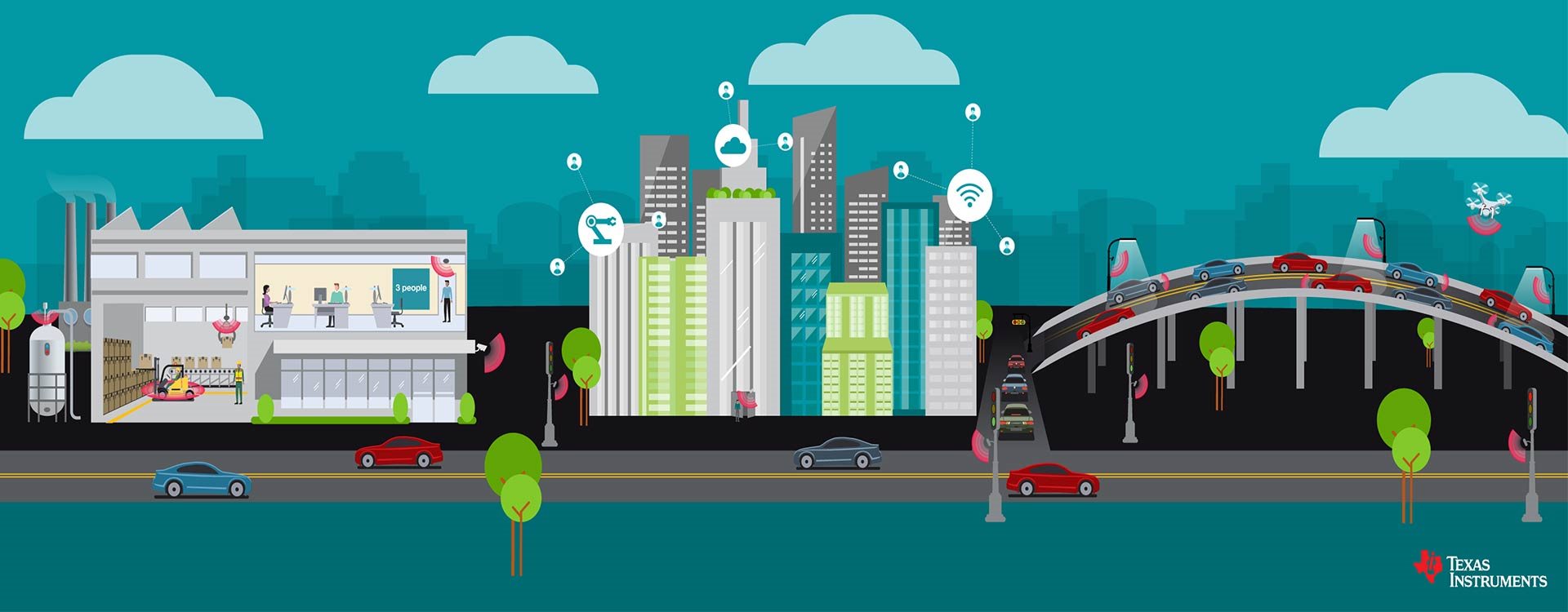SSZT265 august 2020 IWR1843 , IWR6843

In just a few decades, the world has seen the replacement of human-operated machinery and vehicles with intelligent versions now operated autonomously or with less human intervention. With such rapid growth, the industrial and automotive markets have a tremendous need for innovative sensing technologies to help buildings, cities and automobiles sense the world around them and make more intelligent decisions.
Engineers are beginning to better understand the benefits of millimeter-wave (mmWave) radar-based sensing in applications: their high-resolution detection capabilities, flexibility in different environments and non-privacy-invasive sensing. mmWave sensor implementations are both increasing and expanding to a wider set of applications, including elderly monitoring, automotive in-cabin monitoring and robotics.
Frequency regulations can restrict applications that leverage mmWave radar sensing. While Europe and China have more flexibility in the use of the 76- to 81-GHz band, the United States restricts this band to advanced driver assistance system (ADAS) applications, and has assigned the 60- to 64-GHz band to industrial applications such as people counting, robotics and traffic monitoring.
These frequency regulations introduce a challenge – which frequency to leverage for your product. Radar devices that operate at different frequency bands but are pin-to-pin and software-compatible enable development on multiple frequency bands simultaneously, or offer the ability to simply switch between frequencies as regulations and deployments dictate. You can create your printed circuit board, power topology, software algorithms and system architectures independent of frequency band, then reuse these technologies for different deployments depending on application or region.
TI’s IWR6843 (60 to 64 GHz) and IWR1843 (76 to 81 GHz) mmWave radar sensors allow you to make development changes as frequency regulations shift. This allows you to anticipate market and performance needs for existing and emerging applications, or potentially even enable the creation of new markets.
For automotive in-cabin applications, as seen in Figure 1,mmWave radar technology is a good fit for emerging sensing applications such as child presence detection, driver monitoring, passenger classification (child or adult), and more intelligent seat-belt reminders than those that exist today. Recently, the European New Car Assessment Programme (Euro NCAP) roadmap stated that it will reward manufacturers that offer child presence detection functionality as a standard option in vehicles. Euro NCAP did not specify a frequency band or technology, however, leaving developers and regulators to decide which frequency to use.
 Figure 1 Examples of use cases for 77-
and 60-GHz radar for in-cabin sensing child presence and drowsiness
detection
Figure 1 Examples of use cases for 77-
and 60-GHz radar for in-cabin sensing child presence and drowsiness
detectionWith features like automatic emergency braking now mandatory for cars to reach the maximum safety rating in various, many designers are looking to extend safety solutions from automotive to autonomous guided vehicles (AGVs), mobile robots and forklifts seen in Figure 2. The FCC recently ruled that equipment that “transports goods or people” such as AGVs are vehicles, which means that if an AGV employs radar for sensing similar to ADAS in automobiles, those radar systems must also operate in the 76- to 81-GHz band. In other parts of the world, however, AGVs would use the 60- to 64-GHz band instead.
 Figure 2 Examples of industrial
applications using the 60- and 77-GHz frequency bands
Figure 2 Examples of industrial
applications using the 60- and 77-GHz frequency bandsTI radar sensors ease the learning curve for those creating new sensing applications through extensive technical content, reference designs and source-code examples on TI Resource Explorer. Having the flexibility to move between the 60- and 77-GHz frequencies enables more design reuse and faster time to market, while giving you peace of mind to invest in and develop products for new markets irrespective of regulations or region of deployment. With the rapid growth of the automotive radar market and considering all that radar sensors can enable, the multibillion dollar question remains, what new markets will emerge next?